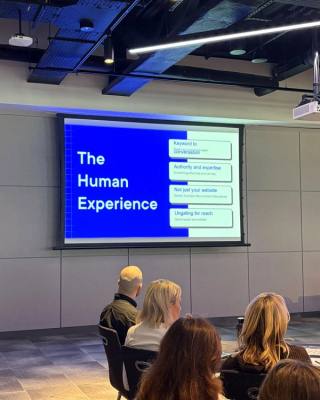In a results-driven marketing environment, calculating ROI is everything. Yet as attribution models become more complex and data access more restricted, measuring ROI with confidence is getting harder. The solution? Bring users to your own ecosystem. By driving traffic to your website you can regain control of the data that matters, and make better decisions about your marketing strategy.
Better data, better decisions
When your website is the central destination for campaigns, you gain full visibility into user behaviour, from landing page to conversion. This makes it possible to build clearer attribution models, track the performance of each marketing channel, and identify which tactics are truly delivering value. Relying on third-party platforms to tell you what’s working introduces blind spots. On your website, you own all of the insights, and all of the outcomes.
High-quality traffic doesn’t just improve metrics; it sharpens strategic decisions. Knowing where users came from, what they engaged with, and what led to conversion helps marketers allocate budget with precision. Without this clarity, ROI becomes a guessing game.
The pressure to prove value
This clarity is especially critical as reporting expectations grow. CMOs are under pressure to justify spend across every channel. Finance teams want bottom-line results. Sales want marketing to deliver leads that convert at higher and higher rates. To meet these demands, marketing teams need clean, complete, and first-hand data, exactly what a good website is designed to provide.
First-party cookies: essential, not optional
One major driver behind this shift is the growing importance of first-party cookies. With third-party cookies being phased out across browsers, websites are becoming the primary source of actionable data. First-party cookies allow you to track, personalise, and analyse user behaviour in a privacy-compliant way. But they only work if users actually visit your site. That’s why directing traffic to owned properties is increasingly a strategic necessity for sustained access to accurate data.
Make your website a performance hub
In the current marketing landscape, your website is the most dependable source of truth. Campaigns that engage users exclusively on external platforms may still build awareness, but they don’t deliver the level of data control needed to accurately measure performance and iterate content. This means that returns will diminish over time without the insights needed to refine and adjust content and messaging.
Your data-collection cheat sheet
Not sure how well your current site supports marketing measurement? Start with a quick audit using the questions below:
- Are key user actions, like form submissions, downloads or button clicks, being tracked as conversions? These should already be configured in your analytics platforms.
- Do you have event-level data beyond pageviews (e.g. scroll depth, video views, link clicks)? This is available through tools such as HotJar and Microsoft Clarity (which we use at Kooba).
- Can you segment audiences based on behaviour or source? There are many ways to do this, including segmented landing pages.
- Are you able to connect on-site activity to leads, pipeline or revenue in your CRM? A logical user experience within your site makes this possible using GA4 funnel analysis.
To demonstrate real marketing ROI, the audience needs to come to you. This means building a site that can welcome, convert, and measure each user. It's a win-win strategy, facilitated by a robust and streamlined digital experience.
If you want to place your website at the heart of your ROI calculations, reach out to our team today. We’d be happy to walk you through your options.








